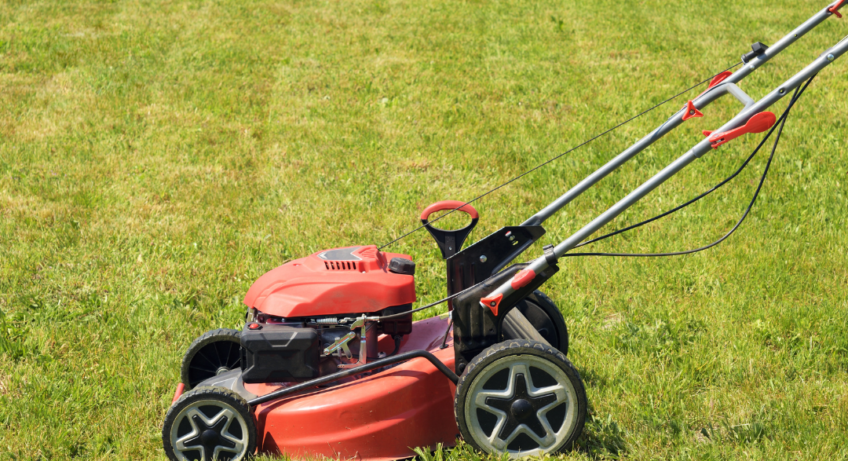Planning a landscaping project? It’s an exciting opportunity to transform your outdoor space into something beautiful and functional. But with all the possibilities comes the potential for a few missteps. Whether you’re refreshing your garden or designing a new yard from scratch, avoiding common pitfalls can save you time, money, and stress. Let’s dive into some of the most frequent mistakes homeowners make and how you can sidestep them.
Ignoring Waste Management
Here’s a question: have you thought about what you’ll do with all the waste from your landscaping project? If not, you’re not alone—this is something many people overlook. When you’re tearing out old plants, digging up soil, or removing concrete, the debris adds up fast. Without a clear plan, it can turn your property into a mess. One smart solution is to hire a roll-out dumpster from wasteremovalusa.com. It gives you a dedicated space to toss all the waste, keeping your project area tidy and manageable. Plus, it saves you from countless trips to the dump. A clean workspace isn’t just about looks; it makes the whole process smoother and safer.
Skipping the Planning Phase
Feeling tempted to grab a shovel and start digging without a plan? Resist that urge. One of the biggest mistakes in landscaping is failing to map out your vision before you begin. Think about it: what’s your goal? Do you want a space for entertaining, a serene retreat, or a family-friendly yard? Once you have that nailed down, sketch out a rough layout. Consider factors like sunlight, drainage, and the type of plants that thrive in your area. Without a solid plan, you might end up with mismatched elements or costly revisions down the line. Taking a little extra time to plan can save you from headaches later.
Underestimating the Importance of Soil
Soil might not be the most glamorous part of landscaping, but it’s absolutely essential. Imagine spending hours planting a new garden, only to watch your plants struggle or die because the soil wasn’t right. This happens more often than you’d think! Before planting, test your soil to understand its pH level, nutrient content, and drainage capabilities. Adding compost or soil amendments can make a world of difference, giving your plants the best chance to thrive. Healthy soil is the foundation of any successful landscaping project, so don’t skip this step.
Overlooking Drainage Issues
Ever noticed standing water in your yard after a heavy rain? If so, you’ve already got a drainage problem. Poor drainage can wreak havoc on your landscaping efforts, leading to waterlogged plants, soil erosion, and even damage to your home’s foundation. The fix? Incorporate drainage solutions into your design from the start. This might mean installing French drains, adding gravel, or reshaping the land to encourage water flow. Addressing drainage early can save you from major problems later.
Choosing Style Over Function
We all want a yard that looks like it belongs in a magazine, but focusing too much on style without considering functionality is a common mistake. Ask yourself: will this design work for your lifestyle? For example, if you love hosting barbecues, you’ll need enough patio space for guests. If you have kids or pets, choose durable, low-maintenance materials that can handle wear and tear. Beautiful landscaping is great, but it needs to be practical for how you’ll actually use the space.
Forgetting About Maintenance
It’s easy to get caught up in the excitement of designing your dream yard and forget about the upkeep. But here’s the reality: every landscaping choice comes with maintenance requirements. Do you have the time (or the desire) to keep up with a high-maintenance garden? If not, go for low-maintenance options like native plants, automatic irrigation systems, and mulching to reduce weeds. Thinking about maintenance from the beginning will save you from frustration later.
Not Considering Seasonal Changes
Your yard might look amazing in spring, but what about in the middle of winter? A mistake many homeowners make is designing their landscaping for just one season. To create a yard that shines year-round, mix in elements that provide interest in all seasons. Evergreens, ornamental grasses, and hardscaping features like stone pathways or sculptures can keep your outdoor space attractive even when flowers aren’t blooming.
Cutting Corners on Tools and Materials
Trying to save money by using cheap materials or the wrong tools can backfire quickly. Poor-quality materials may look fine at first, but they’re likely to wear out faster, costing you more in the long run. And using the wrong tools? That can make even simple tasks feel like a battle. Invest in durable materials and the proper tools for the job—you’ll thank yourself later when the work goes smoothly and the results last.
Neglecting Lighting
Picture this: you’ve created a stunning outdoor space, but once the sun sets, it’s practically invisible. Outdoor lighting is often an afterthought in landscaping projects, but it shouldn’t be. Strategic lighting can enhance the beauty of your yard, improve safety, and extend the usability of your space into the evening. Whether it’s path lights, spotlights, or string lights, the right lighting adds warmth and dimension to your design.
Going Over Budget
Lastly, let’s talk about money. Landscaping projects can get pricey, especially if you don’t set a clear budget upfront. Start by calculating how much you’re willing to spend and allocate funds to each part of the project—plants, materials, labor, and so on. Having a budget doesn’t mean you can’t get creative. It just helps you prioritize and make smart choices without financial surprises. Remember, it’s better to scale down your vision slightly than to end up halfway through with no funds left.
Enjoy Your New Space
A well-planned landscaping project is one of the most rewarding ways to improve your home. By avoiding these common mistakes, you’ll set yourself up for success and create an outdoor space that you’ll love for years to come. So, what’s your next step? Grab your plan, hire that roll-out dumpster, and get started!

